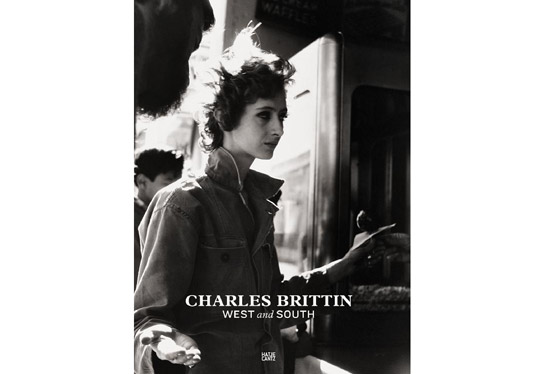Review: West and South by Charles Brittin

There’s a curious photograph in Charles Brittin: West and South. It shows a dilapidated shack, with a sign next to the entrance that says “Exhibition Charles Brittin”. The index identifies it as a photograph of a “one-day exhibition at Wallace Berman’s Semina Gallery, Larkspur, 1961.” Photographers don’t show their work in semi-destroyed wooden shacks any longer. Pretty much everything depicted in the book, photography covering the period from the mid 1950s to the late 1960s, has changed, too. Brittin died earlier this year, and from the essay he contributed to the book, I am not so sure what he made of our world now, a world that looks and feels to different from the one depicted in the book. (more)
In a nutshell, West and South focuses on two main topics: The beatnik scene around Berman, and, later, the civil-rights movement. I’ve always had a bit of a hard time trying to understand how those two might be connected - if, in fact, they were. They certainly were in the life of Charles Brittin. I suppose one could call the beatnik an earlier incarnation of today’s hipsters, the obvious differences being caused by what made the beatniks beatniks and what makes the hipsters hipsters. We might have to wait another twenty years at least to see whether the hipsters will acquire the same status the beatniks enjoy today. I’m tempted to think they won’t, but I’m starting to digress maybe a bit more than I should.
Regardless, I found a couple of sentences in Brittin’s essay that struck me. Here’s the first:
“As a culture we’re hooked on nostalgia, and we love the idea that things used to be more charming and agreeable than they are now. But I believe people right now are doing similar things, and having substantially the same experiences.”And later on there is
“When I look at the pictures from those years it makes me feel nostalgic. During the sixties I knew a lot of people who were willing to take chances to defend things they believed in - they were risking their lives for civil rights, and in protest against the Vietnam War. Most of the people I know today who oppose what’s going on in America aren’t prepared to do anything serious.”So the beatniks, say, are just like the hipsters, but people back then did things, whereas people today are reluctant to do so. I don’t know which one is true, but it’s an interesting exercise to think about which one might be.
I like photography that changes me into a different person, even (especially if!) I am not prepared for it. When I first saw West and South I thought it was one of those nostalgic books. But it isn’t. There is a connection between the photographs of beatniks and of civil-rights protestors in handcuffs sitting on a floor somewhere. What is more, I don’t believe in the good old times that I never experienced. The idea of some good old times before I was around strikes me as odd, since it could all be just made up, right? I’m old enough now to know that what some people might think of as (not-so-distant) good old times in reality could have been quite hideous (think the 1980s). Of course, what people want is the good from the old times (the cool music of the 1980s), but not the bad (the nuclear-weapons hysteria of the 1980s).
Regardless, photography serves as a kind of memory, but it’s not a very good memory. Or maybe it’s just as good as our own memory: Very selective. We remember what we like to remember. I’m digressing again, but maybe that’s not so inappropriate for a book like this, where there isn’t a straight line going from A to B, where things happen, where someone takes pictures finding himself in different circumstances, in part by chance, in part by conviction. After all, that is life, whether you take pictures or not.
Charles Brittin: West and South, photographs and essay by Charles Brittin, 216 pages, Hatje Cantz, 2011